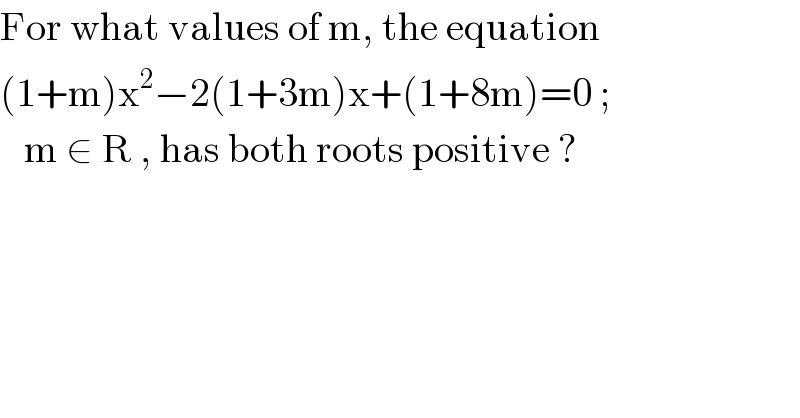
Question and Answers Forum
Previous in Relation and Functions Next in Relation and Functions
Question Number 17359 by ajfour last updated on 04/Jul/17

Commented by ajfour last updated on 04/Jul/17

Commented by ajfour last updated on 04/Jul/17

Commented by prakash jain last updated on 04/Jul/17
![roots are ((−b)/(2a))±((√(b^2 −4ac))/(2a)) −(b/(2a)) lies in between roots condition for +ve roots>0 −(b/(2a))≥0,αβ>0,D≥0 (((1+3m))/((1+m)))≥0⇒m∈(−∞,−1)∪[−(1/3),∞) (((1+8m))/((1+m)))>0⇒m∈(−∞,−1)∪(−(1/8),∞) D=4{(1+3m)^2 −(1+m)(1+8m)}≥0 ⇒m(m−3)≥0⇒m∈(−∞,0]∪[3,∞) answer m∈(−∞,−1)∪(−(1/8),0]∪[3,∞)](Q17365.png)
Commented by Tinkutara last updated on 05/Jul/17

Commented by ajfour last updated on 05/Jul/17

